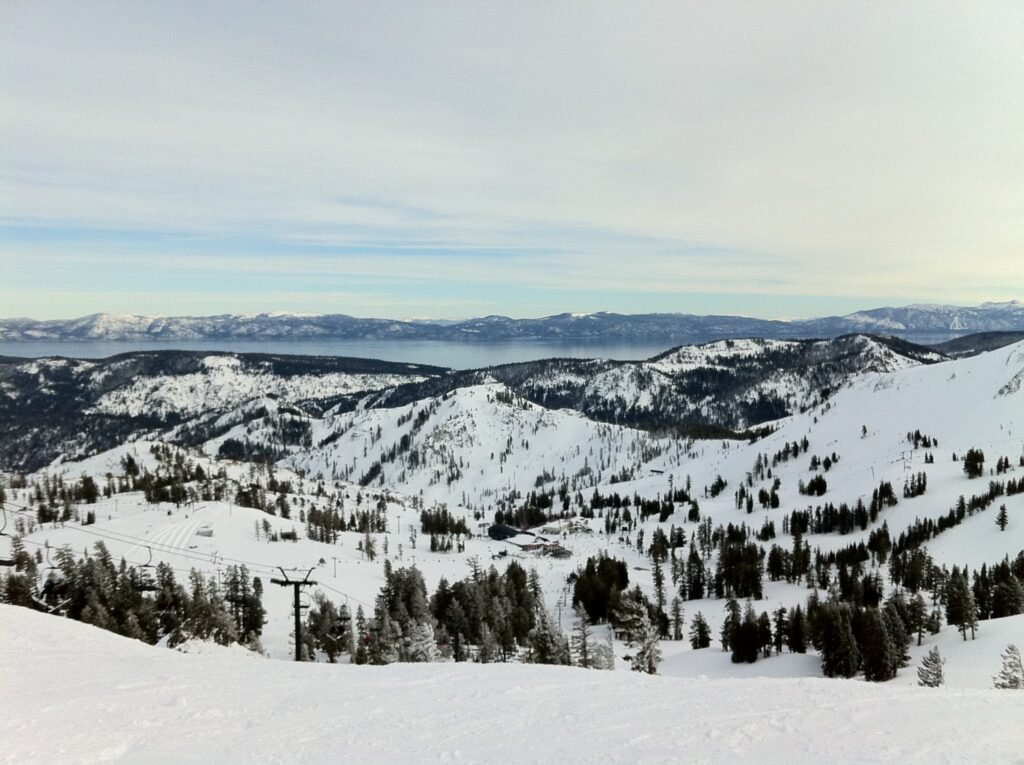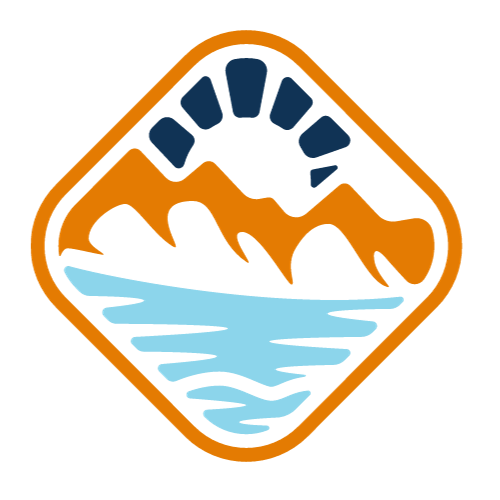Lake Tahoe, a large and beautiful lake, sits on the border of California and Nevada. It is known for its clear blue water and stunning scenery. The weather around Lake Tahoe is interesting because it changes with the seasons.
In winter, it gets cold with lots of snow, perfect for skiing. Summers are warm and sunny, great for swimming and hiking. The lake is surrounded by mountains, and this affects the weather too.
Does the weather change from one part of Lake Tahoe to another? Yes, it does. The lake is big, and the mountains around it make different weather in different places.
One side of the lake can be sunny while the other side has clouds. In some parts, there might be more snow or rain than in others.
North vs. South Lake Tahoe: A Weather Comparison

Lake Tahoe, split between California and Nevada, has unique weather. In the North, it’s cooler, with more snow in winter. This is great for skiing. Summers are mild, good for being outside without getting too hot. The South is warmer, thanks to being lower and near a desert. Winters have less snow, attracting those who like milder cold. Summers are perfect for beach fun and water sports.
North Lake Tahoe’s higher and more inland position makes it colder. More snow extends the ski season. South Lake Tahoe’s lower elevation and closer desert proximity make it warmer. Winters are less snowy, summers hotter, drawing beach crowds and lively evenings.
Mountains around the lake shape this weather. It cause a rain shadow, affecting each side differently. More snow falls in the North because it’s away from the shadow. Knowing this helps plan visits. Skiers might prefer the North’s snow, while beach lovers might choose the South’s sun.
What is the weather pattern in Lake Tahoe?
Here’s a breakdown of the weather patterns by season:
Winter (December to February)
- Winter is perhaps what Lake Tahoe is best known for, attracting skiers and snowboarders from around the world to its renowned ski resorts.
- The area receives significant snowfall, with averages ranging from 200 inches to over 500 inches at the highest peaks around the lake.
- Temperatures can drop below freezing, especially during the night, and daytime highs are typically cold but can be milder under direct sunlight.
Spring (March to May)
- Spring sees a gradual warming trend, although snow can continue to fall well into March or even April.
- The melting snow feeds into the lake and surrounding streams, making the landscape particularly vibrant.
- Weather can be quite variable during these months, with a mix of late-season snow showers and warmer, sunny days as summer approaches.
Summer (June to August)
- Summer brings warm, dry conditions, with daytime temperatures often reaching into the 70s and 80s Fahrenheit (around 20 to 30 Celsius), making it ideal for hiking, boating, and other outdoor activities.
- Nights remain cool, offering a refreshing contrast to the daytime heat.
- Precipitation is minimal, though afternoon thunderstorms can occur, especially in the surrounding mountains.
Fall (September to November)
- Fall features cooler temperatures and increasing precipitation as the region transitions back into winter.
- This season is known for its beautiful foliage, with aspen trees turning golden and adding to the scenic beauty of the area.
- Snow can start to fall as early as late October or November, although significant accumulations typically don’t occur until later.
Does Lake Tahoe’s Weather Vary Across the Lake?
Yes, Lake Tahoe’s weather does indeed vary across the lake, influenced by a combination of factors including elevation, topography, and the lake itself. Spanning the border between California and Nevada in the Sierra Nevada mountains, Lake Tahoe is situated at an elevation over 6,000 feet, with surrounding peaks reaching upwards of 10,000 feet. This high elevation means the area experiences a range of microclimates, causing weather conditions to differ from one shore to the other and from the lake level to the mountain tops.
FAQ
- Why does North and South Lake Tahoe have different weather?
North Lake Tahoe is cooler and snowier due to higher elevation and proximity to mountains. South Lake Tahoe is warmer, influenced by lower elevation and nearby desert. - Does elevation affect weather at Lake Tahoe?
Yes, higher elevations around Lake Tahoe, especially in the north, experience cooler temperatures and more snow. - Can Lake Tahoe’s weather change quickly?
Yes, Lake Tahoe’s weather can change rapidly due to its large size and mountainous terrain. - Is summer weather uniform around Lake Tahoe?
No, summer temperatures can vary. The south shore is typically warmer than the north due to its lower elevation.
Source
lake tahoe weather – https://weather.com/weather/tenday/l/South+Lake+Tahoe+CA?canonicalCityId=6bee89a5b03ca0ef2716643133e5ac870c6c8aebbf1303352220013137ecb31b
https://www.tripsavvy.com/lake-tahoe-weather-and-climate-1478030

![20 Free Things to Do in Lake Tahoe [From Trails to Beaches]](https://tahoetreasures.com/wp-content/uploads/2023/12/Free-Things-to-Do-in-Lake-Tahoe-768x461.png)
![Top 10 Beach Wedding Destinations in Lake Tahoe [Updated 2024]](https://tahoetreasures.com/wp-content/uploads/2023/12/Beach-Wedding-Destinations-in-Lake-Tahoe-768x461.png)



![Best Bubble Tea Spots in Lake Tahoe [My Top 5 Places]](https://tahoetreasures.com/wp-content/uploads/2023/12/Bubble-Tea-in-Lake-Tahoe-768x461.png)